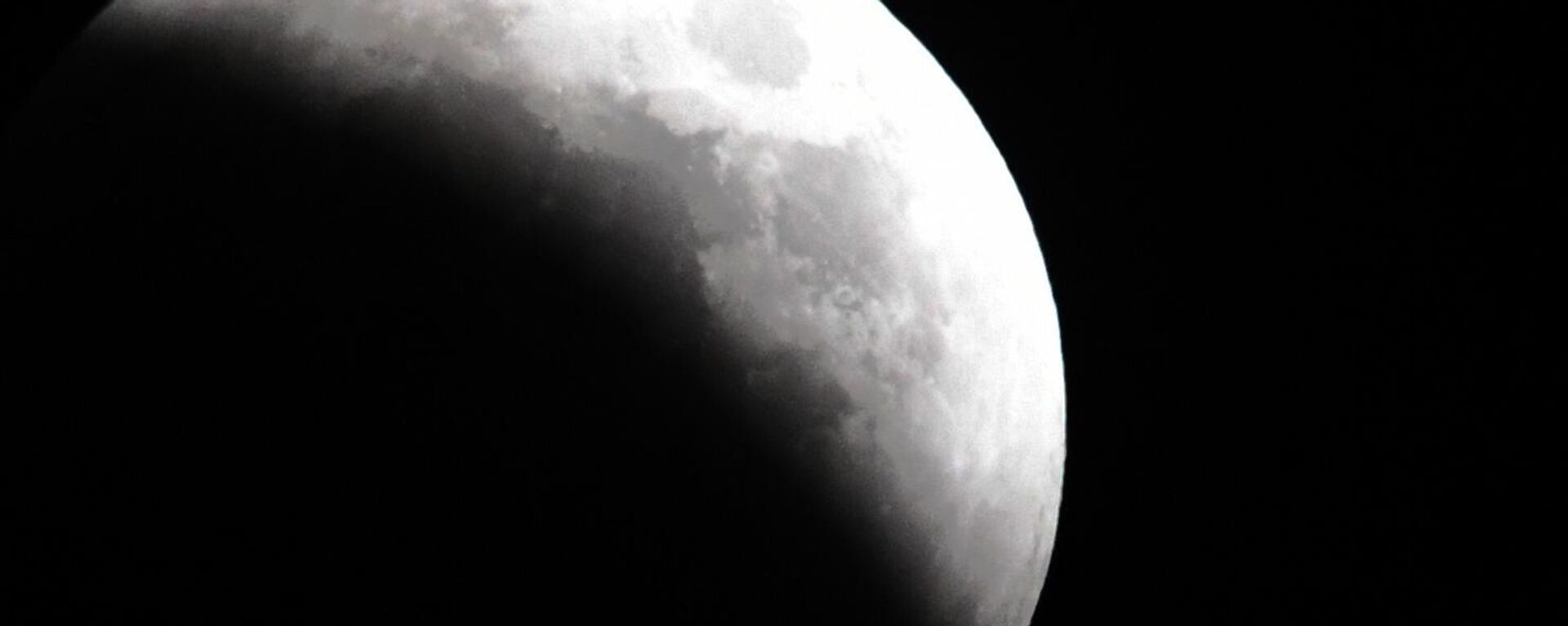https://sputnikglobe.com/20230708/rare-granite-mass-found-under-lunar-surface-upending-understanding-of-earths-satellite-1111736842.html
Rare Granite Mass Found Under Lunar Surface, Upending Understanding of Earth's Satellite
Rare Granite Mass Found Under Lunar Surface, Upending Understanding of Earth's Satellite
Sputnik International
The discovery of a large deposit of granite on the moon has puzzled scientists, who are not sure how it got there.
2023-07-08T03:42+0000
2023-07-08T03:42+0000
2023-07-08T03:41+0000
beyond politics
southern methodist university
earth
moon
granite
science & tech
https://cdn1.img.sputnikglobe.com/img/07e7/04/0d/1109481735_0:117:1780:1118_1920x0_80_0_0_1897257048a2d270ed35ca29a7bb5598.jpg
A massive blob of granite has been discovered under the surface of the moon, upending scientists' understanding of our closest celestial neighbor.The traces of granite, which would be common on Earth, is evidence of a type of volcanic activity not previously thought to be on the moon, and scientists aren’t sure yet how it got there.Analysis of the site suggests the rock formed from solidified magma, also known as a batholith, that formed roughly 3.5 billion years ago.Large bodies of granite on Earth are used to feed volcanoes, like the large system that feeds volcanoes in the Northwest region of the United States today.But what puzzles scientists is that the conditions necessary to create granite do not exist on the moon. On Earth, granite formation requires a large amount of water and plate tectonics which help the material from Earth’s crust melt and be recycled since granite - unlike other volcanic materials - requires multiple re-meltings of basaltic rock. But since the moon doesn’t have liquid water or plate tectonics, scientists are stumped on what created the granite.The granite blob was discovered by two Chinese orbiters, Chang’e 1 and Chang'e 2. They detected a spot under a suspected volcano dubbed Compton-Belkovich, near the moon's north pole on the far side, using their microwave sensor. The data was made publicly available and researchers at the Southern Methodist University were able to analyze it.The area is roughly 20 times hotter than the average for the lunar highlands.The Compton-Belkovich area is also notable because it has a large amount of thorium, which is a byproduct of radioactive decay, creating heat. Siegler and his team argue the heat anomaly can be explained by radioactive elements in the granite matrix.The team say this is evidence of a magma plumbing system under the lunar surface that would be much larger than expected.However, to create such a system would require one of three things - all of which are inconsistent with current models of the moon: a large mantle plume that feeds magma from inside the moon; an anomalous pocket of water in the area; or a patch of elements creating enough radioactive material to facilitate the heating and re-melting of basaltic rocks.The team's findings were published in the journal Nature.
https://sputnikglobe.com/20230613/moon-could-be-hosting-life--and-scientists-say-we-could-have-put-it-there-1111099900.html
earth
Sputnik International
feedback@sputniknews.com
+74956456601
MIA „Rossiya Segodnya“
2023
News
en_EN
Sputnik International
feedback@sputniknews.com
+74956456601
MIA „Rossiya Segodnya“
Sputnik International
feedback@sputniknews.com
+74956456601
MIA „Rossiya Segodnya“
granite, moon, water on the moon, new moon discoveries, far side of the moon, dark side of the moon
granite, moon, water on the moon, new moon discoveries, far side of the moon, dark side of the moon
Rare Granite Mass Found Under Lunar Surface, Upending Understanding of Earth's Satellite
While the moon is the only celestial body that humans have set foot on, there is still a lot we do not know about its composition and history.
A massive blob of granite has been discovered under the surface of the moon, upending scientists' understanding of our closest celestial neighbor.
The traces of granite, which would be common on Earth, is evidence of a type of volcanic activity not previously thought to be on the moon, and scientists aren’t sure yet how it got there.
Analysis of the site suggests the rock formed from solidified magma, also known as a batholith, that formed roughly 3.5 billion years ago.
Large bodies of granite on Earth are used to feed volcanoes, like the large system that feeds volcanoes in the Northwest region of the United States today.
But what puzzles scientists is that the conditions necessary to create granite do not exist on the moon. On Earth, granite formation requires a large amount of water and plate tectonics which help the material from Earth’s crust melt and be recycled since granite - unlike other volcanic materials - requires multiple re-meltings of basaltic rock.
But since the moon doesn’t have liquid water or plate tectonics, scientists are stumped on what created the granite.
The granite blob was discovered by two Chinese orbiters, Chang’e 1 and Chang'e 2. They detected a spot under a suspected volcano dubbed Compton-Belkovich, near the moon's north pole on the far side, using their microwave sensor. The data was made publicly available and researchers at the Southern Methodist University were able to analyze it.
"What we found was that one of these suspected volcanoes, known as Compton-Belkovich, was absolutely glowing at microwave wavelengths," planetary scientist Matthew Siegler says. "What this means is that it is hot, not necessarily at the surface, as you would see in the infrared, but under the surface.”
The area is roughly 20 times hotter than the average for the lunar highlands.
The Compton-Belkovich area is also notable because it has a large amount of thorium, which is a byproduct of radioactive decay, creating heat. Siegler and his team argue the heat anomaly can be explained by radioactive elements in the granite matrix.
The team say this is evidence of a magma plumbing system under the lunar surface that would be much larger than expected.
However, to create such a system would require one of three things - all of which are inconsistent with current models of the moon: a large mantle plume that feeds magma from inside the moon; an anomalous pocket of water in the area; or a patch of elements creating enough radioactive material to facilitate the heating and re-melting of basaltic rocks.
“Was there water on the moon – at least in this one spot?” Siegler wonders. “Or was it just especially hot?”
The team's findings were
published in the journal Nature.



